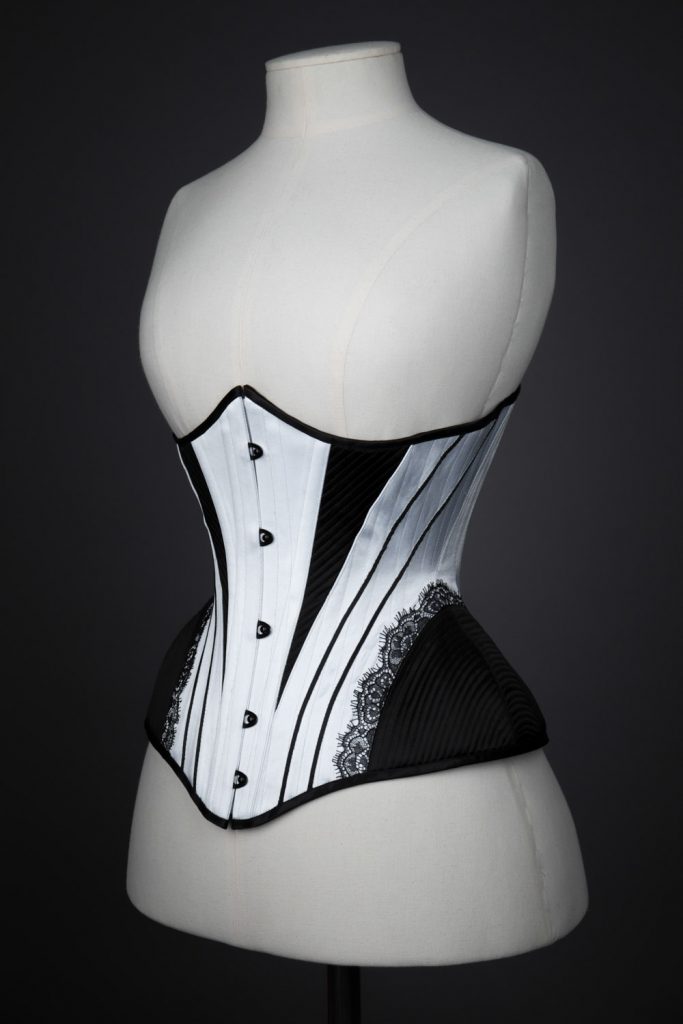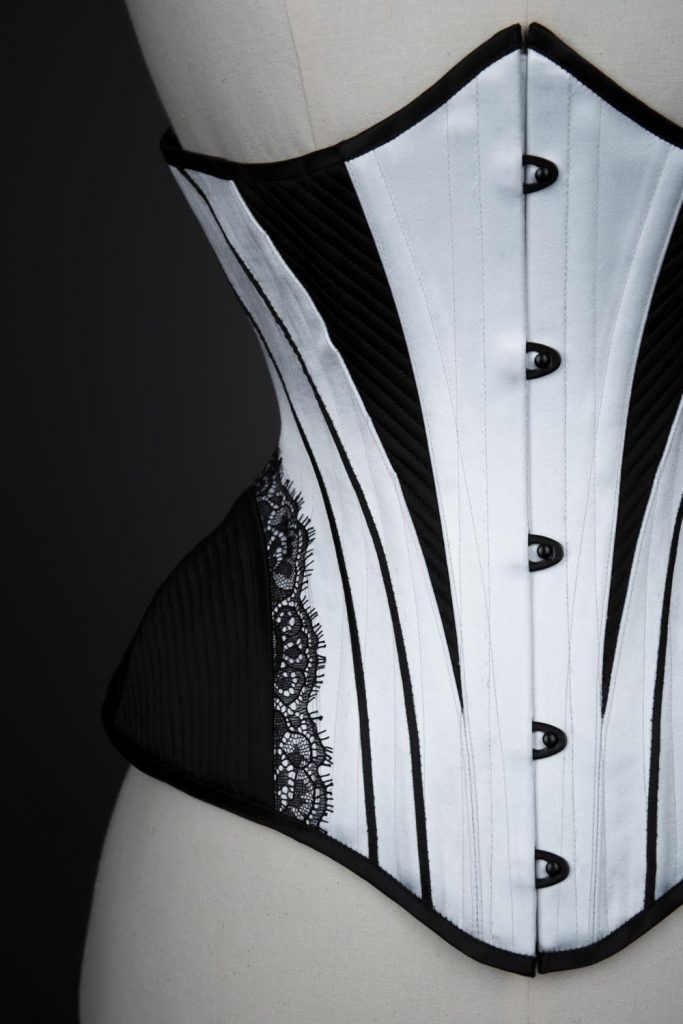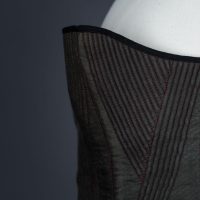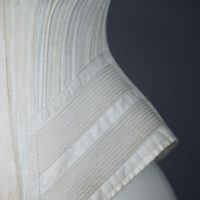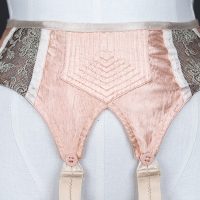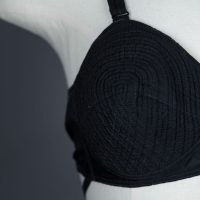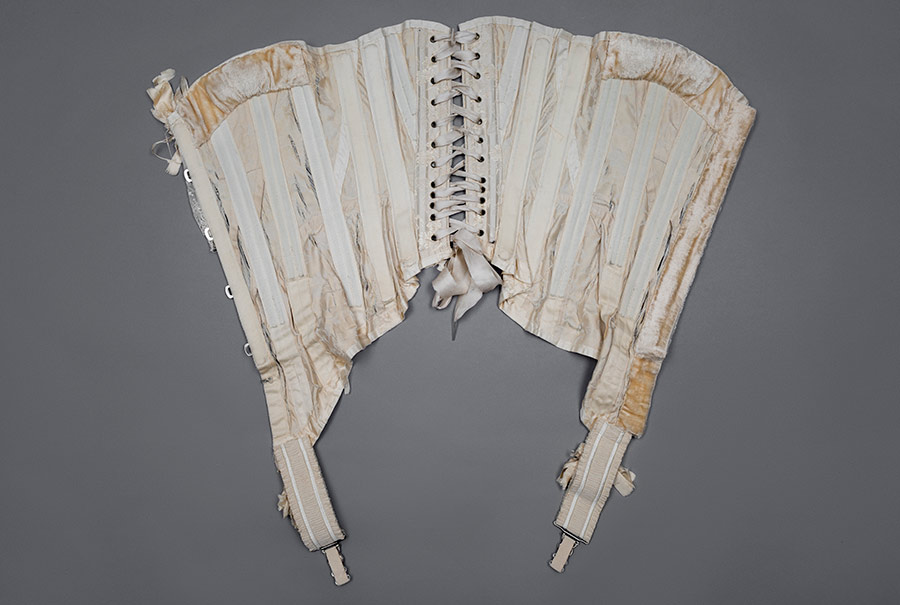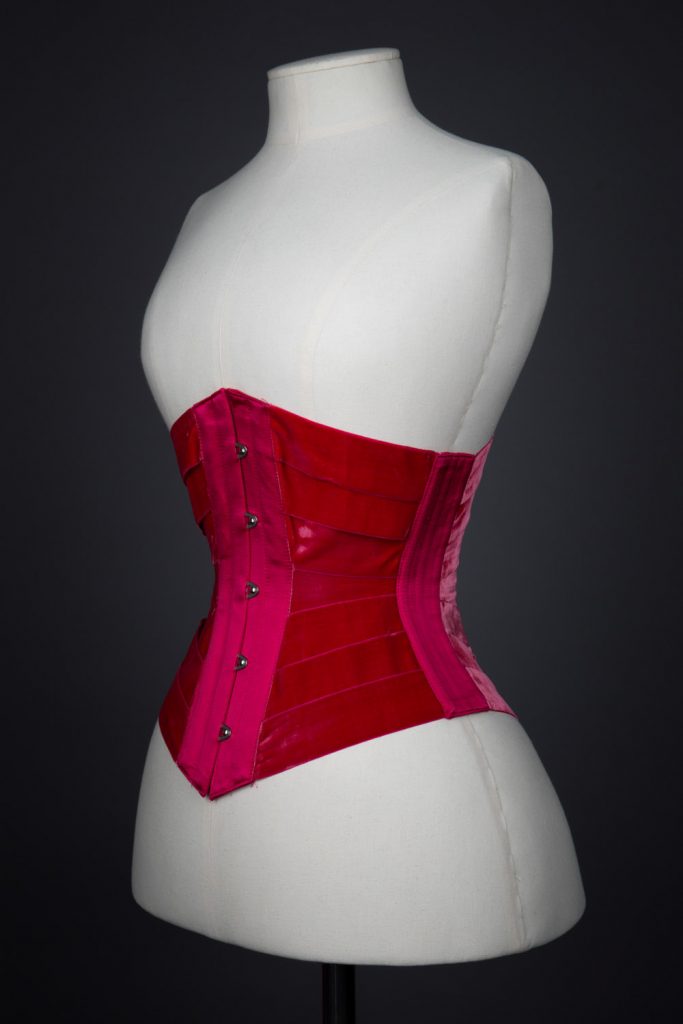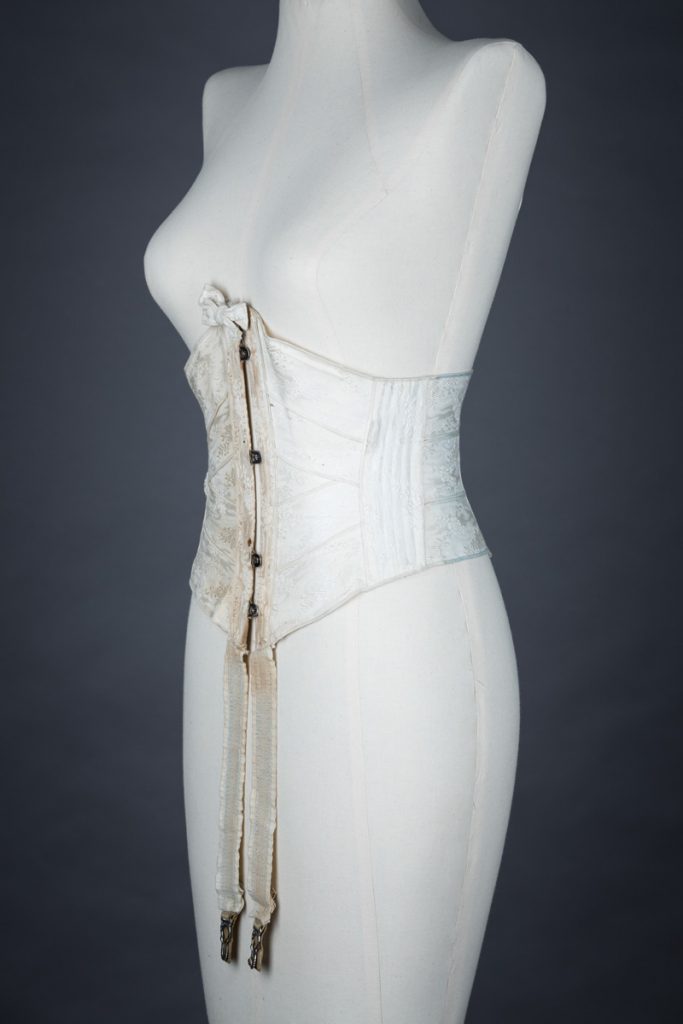As the European Renaissance referenced classical Greek and Roman art, this Modern Corsetry Renaissance likewise maintains deep roots in forgotten elements of Victorian and Edwardian corset-making. An increased interest in historic patents, made available through the internet, sparked waves of interest. Patents may have claimed novel features, or perhaps just offered an unexpected take on style lines. New materials also became accessible, such as high-grade synthetic whalebone, with which to better recreate or intentionally hybridised historically inspired styles.
Chapter 2: Patterning, Shape & Texture

With experimentation, new trends in stylelines began to emerge. An extant silhouette between a classic “hourglass” and dramatic “pipestem” rose in popularity after being coined the “cupped rib” by Marianne Faulkner of Pop Antique. Not only are seams and bone channels used as design opportunities, but there’s also greater exploration of top and bottom edge shaping: hearts, tulips, even wing motifs emerge.
'Winter Sky' Satin & Lace Underbust Corset By Royal Black Couture & Corsetry
Date: 2015
Origin: Austria
Fabric: Duchesse satin, stretch satin, lace
Brand: Royal Black Couture & Corsetry
Designer: Barbara Pesendorfer
This corset was a sample for Royal Black’s “Lace Dreams” collection, where the designer focused on purely satin and lace designs. It’s an experiment with historical S bend patterns, with design details influenced by vintage lingerie, such as the quilted satin gussets.
Corsets are wearable art. They are my way to express myself creatively, to celebrate craftsmanship and to tell stories. I love the contrast of corsets being restrictive garments but at the same time being the base for complete creative freedom. Maybe like an empowering armor, that makes the wearer the main character of the story I want to tell with the design.
– Barbara Pesendorfer, 2016
Cording and quilting have long been a popular stitch technique to achieve support and structure in underwear. It can also be used as a purely decorative detail, with contemporary design using it as a nod to ‘vintage’ aesthetics.
Silk & Lace Padded Mid-bust Corset With Suspenders
Date: c. early 1900s
Origin: France
Fabric: Silk
Although time has not treated this corset kindly and its silk structure is largely in tatters, it is still an exquisite example of Edwardian corsetry. The patterning is extremely complex as is typical of the ‘S curve’ silhouette. The panels have swooping diagonal lines with multiple gusset inserts at the bust and hips.
"Vixen" Velvet Ribbon Corset By Pop Antique
Date: 2017
Origin: San Francisco CA, United States
Fabric: Cerise pink silk duchess, cerise pink antique silk velvet ribbon
Brand: Pop Antique
Designer: Marianne Faulkner
The first corset that Marianne Faulkner ever made was a faux ribbon corset, a style that was first popularised in the late 19th century. The idea of a true ribbon corset made for serious lacing later became an integral part of the Pop Antique line. This corset was custom made for Karolina Laskowska, and the pattern is adapted from the brand’s standard fit, modified for the width of the antique velvet ribbons. The number of ribbons in each section was increased from 5 to 7, for a total of 34 panels.
Modern corsetry means getting to choose elements from not just the history of corsets but also contemporary fashion and textiles. You’re not tied to a specific silhouette, purpose, construction, or fabric choice. I love to discreetly integrate corset structure (and dramatic waist reductions!) into other garments, or cover the corset with an unexpected fabric like a sweater knit. The key is to allow the strengths of the other inspiration sources, methods, and materials to shine through, rather than forcing them to be more corset-like and losing their intrinsic qualities.
– Marianne Faulkner, 2017
Overlocked Floral Jacquard Weave Ribbon Corset
Date: c. 1900s
Origin: Great Britain
Fabric: Jacquard weave cotton
Brand: Unknown
Ribbon corsets began to appear at the turn of the century and offered women a much greater freedom of movement than traditional corset styles. The cut was much less restrictive, constricting only a small portion of the waist and leaving the hips and bust free.
The Underpinnings Museum relies on your generous support to continue its work. If you’ve enjoyed visiting the website, please consider donating to The Underpinnings Museum or purchasing some merchandise. All funds are invested directly back into the project to bring you more free access underwear history.
